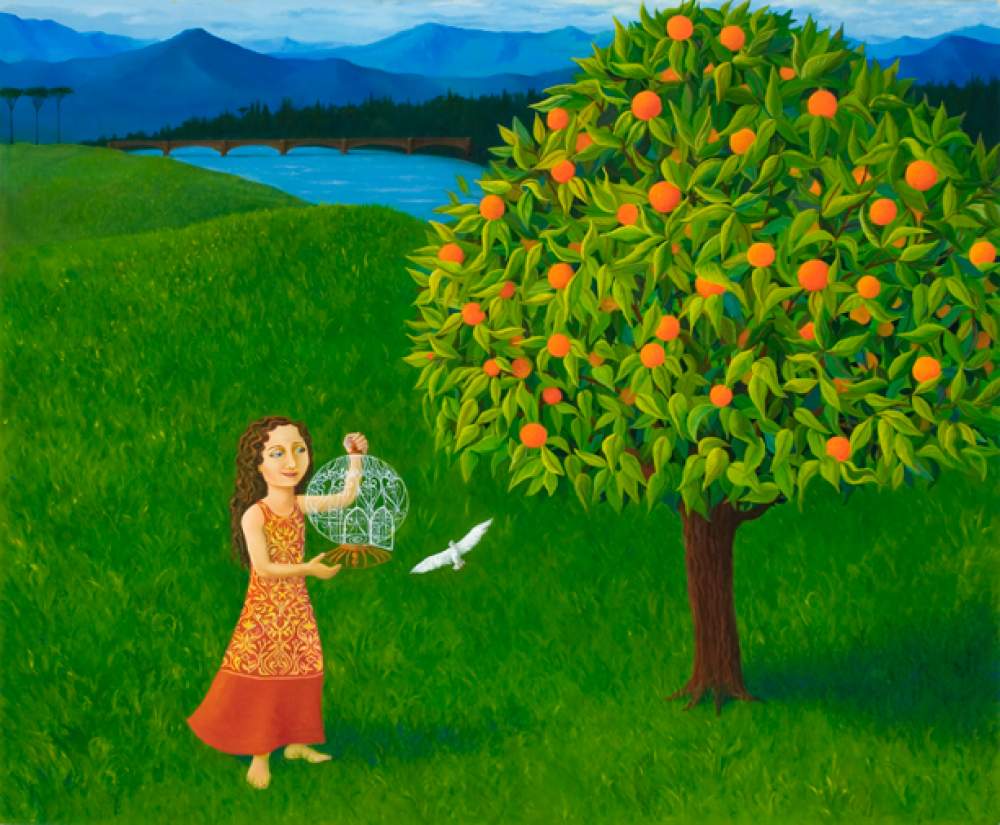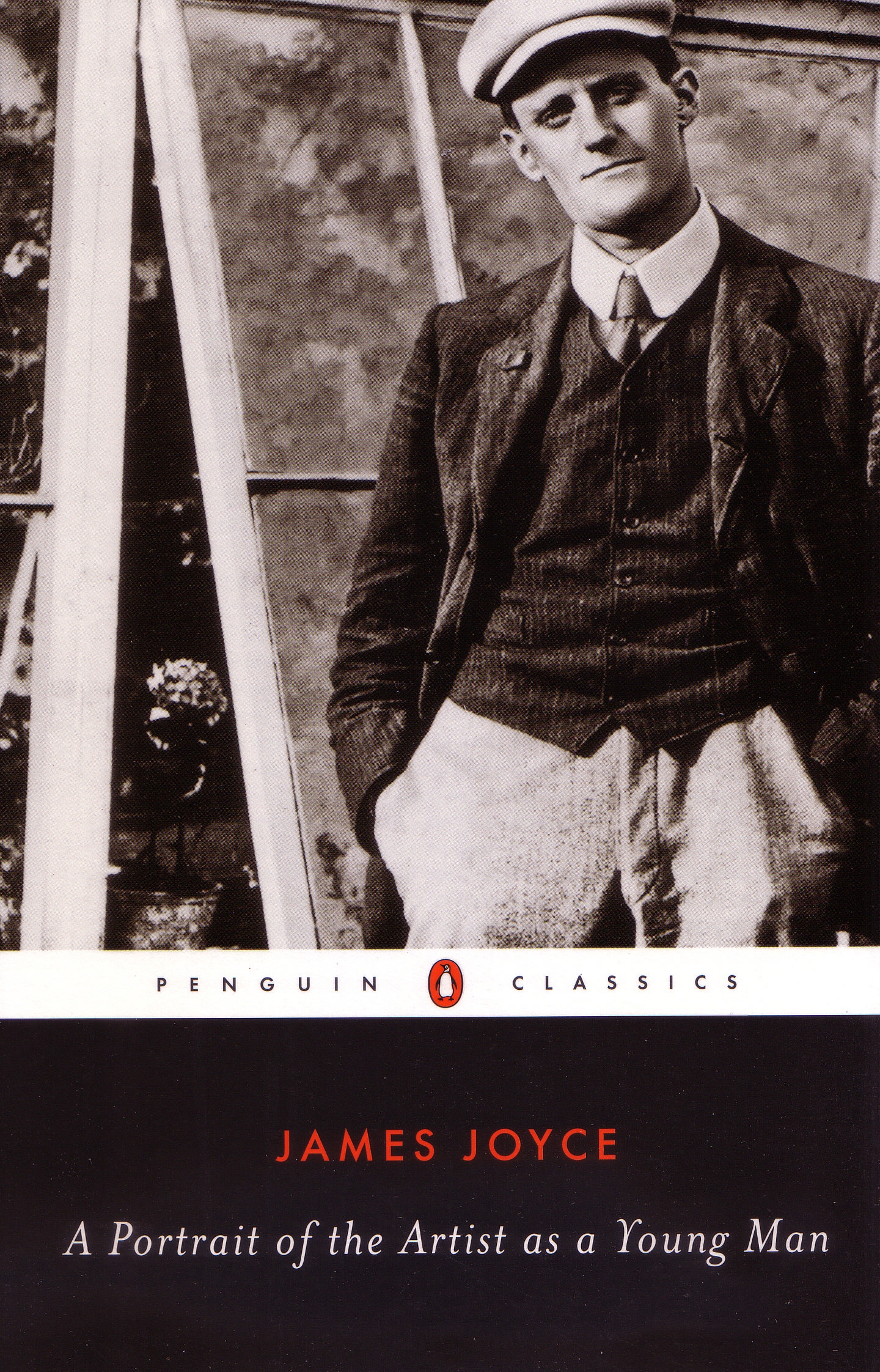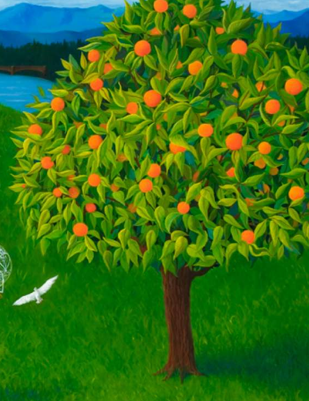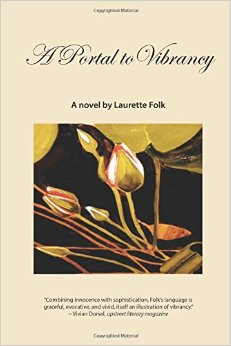Theme Essay by Laurette Folk
Art as a Vehicle for Compassion

When I was seventeen, I read James Joyce’s A Portrait of the Artist as a Young Man for AP English. At the time, I was battling my first depression and immediately saw myself in Stephen Dedalus, Joyce’s autobiographical protagonist. Stephen is an impressionable boy, vulnerable to the glorious and treacherous symbolism of the Catholic Church, hyper aware of the Church’s message: Be Good or Else.
I don’t recall any big sin prodding me toward the flames of hell as Stephen was prodded by losing his virginity to a prostitute. I grew up Catholic a century later in New Jersey and then New Hampshire, not in late-nineteenth-century Ireland. Still, I identified with Stephen when, after the tryst with the prostitute, he attends a retreat honoring St. Francis where the focus is “death, judgment, hell, and heaven.” I felt Stephen’s existential pangs of worry for his soul when he recalls listening to a fire-and-brimstone sermon at the retreat and thinks “every word of it [is] for him.”
Even more, I felt the tremors of my own depression when Stephen experiences “the death chill” of the preacher’s words “touch the extremities and creep onward towards the heart” as “the poor helpless human spirit, sobbing and sighing, gurgling and rattling in the throat. No help! No help!”
I was there with him through the good parts, too. Toward the end, Stephen experiences relief and epiphany once he realizes sin is a fallacy. As he walks barefoot along the beach, he sees a beautiful girl wading and is struck by “profane joy”:
To live, to err, to fall, to triumph, to recreate life out of life! A wild angel had appeared to him, the angel of mortal youth and beauty, an envoy from the fair courts of life, to throw open before him in an instant of ecstasy the gates of all the ways of error and glory. On and on and on and on!
Back then, like Stephen, I was not entirely aware of who I was and what I needed. But I knew that Stephen’s epiphany was the realization of his authentic self—the artist—and reading A Portrait became my own epiphany. At seventeen, I was just beginning to understand I wanted to be an artist, too. I discovered a new way of interpreting my life, one that eventually helped me to let go of the erroneous beliefs—religious and otherwise—that caused so much of my teenage guilt and anguish.
 Now, decades after my first epiphany with a literary classic, I want the same for my students, family members, and friends. I want them to experience the way great works of literature and art can alleviate suffering. But while critics and other readers often highlight the importance of art in nurturing empathy, I mean more than identification with a character.
Now, decades after my first epiphany with a literary classic, I want the same for my students, family members, and friends. I want them to experience the way great works of literature and art can alleviate suffering. But while critics and other readers often highlight the importance of art in nurturing empathy, I mean more than identification with a character.
Empathy is only the starting point. Readers can empathize with the plight of characters they love, as I did with Stephen Dedalus; people can be captivated by works of art for very personal reasons. Yet, I believe that when somebody says art matters, it’s because he or she has been moved beyond personal illumination to act more compassionately in the world.
As a professor, I like to believe I exercise compassion by making my students aware of the vast range of human experience through the literature I assign. This is what we English teachers do: We guide our students to characters they will recognize to open up their own experiences and allow them to feel less alone. We hope that the text will provide an answer that will better their lives.
Last spring, I sent out an informal survey regarding the healing aspects of literature to students and faculty at North Shore Community College near Boston, where I teach, as well as to writers, artists, and Facebook friends. It included two questions:
- Have you ever empathized with a character of fiction so profoundly it changed your belief system and/or solved an internal problem?
- Have you ever been so inspired by a character in a work of fiction that you implemented a positive change in your life or the life of another?
I received close to fifty responses, reinforcing my faith in art as a vehicle for compassion. A colleague of mine in the English Department noted that Bruce Weigl’s poetry on the Vietnam War helped her relate to Iraq and Afghanistan veterans:
Every time I encountered a veteran, I thought of this Weigl poem, ‘Snowy Egret.’ It made me approach these students with a respect and gentleness that I didn't think I had in me…. [I]t clearly made me treat veterans differently than I expected I would [based on] my political beliefs.
A student respondent explained that several years ago she played Philomele in The Love of the Nightingale, a 1988 play by Timberlake Wertenbaker based on a myth from Ovid’s Metamorphoses. The student said she empathized with the character so profoundly that she left an emotionally abusive relationship. In the play, Philomele is raped by King Tereus, who then cuts out her tongue so she can’t tell anyone—especially her sister, his wife. Philomele is resolute about making this injustice known and acts out the rape with dolls. The student connected Philomele’s paralyzing fear of her brother-in-law with her own fear at the time of her boyfriend:
I don’t know what would have happened to me had I not been in this play and had I not seen the way Philomele handled a very similar situation…. No person deserves to go through what I or Philomele went through, but staying ‘silent’ is not going to help make sure a tyrant gets what he deserves.
Tam Martin Fowles, founder of Hope in the Heart, a U.K. organization based in Penzance, Cornwall, also responded to my survey. I know her through the Charter for Compassion, a movement launched in 2008. The Charter for Compassion website calls it “a cooperative effort to restore not only compassionate thinking but, more importantly, compassionate action to the center of religious, moral and political life.”
Martin Fowles cited as her inspiration Patrick Gale’s 2007 novel Notes from an Exhibition, which reflects on a bipolar Cornish artist’s life after her death. She specifically pointed to the character of Antony, the artist’s husband and a Quaker who “lives his life by a set of values that aroused great empathy and inspiration [in me].” After reading the book, Martin Fowles said she began to attend Quaker meetings herself and ultimately discovered a faith that suits her and a community of people that embodies “an ethos of peace and social action.”
The catharsis of artistic creation can also be a compassionate act toward the self. “Catharsis” was coined by Aristotle to describe the purging of emotions the Greeks experienced when watching a tragedy. In contemporary terms, the idea of catharsis has since been expanded to include any release of emotional tension that’s ultimately healing, especially through psychotherapy.
For many writers, artists, and musicians, catharsis is a creative starting point as well as a means of healing. They begin with a particular suffering, expand on it, even revel in it, then release it through invention for others to experience.
That’s the genesis of Jill Slaymaker’s 2007 painting “Aurora, Paloma, and the Melangolo Tree,” which appears in the opening of this essay. Slaymaker, whose work has been exhibited in New York and Barcelona, submitted the image to me for an anthology that’s part of The Compassion Project, an organization I founded this year to promote compassionate thought and action through the arts.
 In her artist's statement for the piece, Slaymaker says she painted it after a trip to the Mediterranean during which she became ill and spent two weeks in a “sanitorium, formerly a twelfth-century monastery.” There, she rested under a 900-year-old bitter orange (melangolo) tree in the garden, awed by its resilience and beauty. She painted several watercolor studies of it and, within a week, was healed. Slaymaker notes she’s since used the melangolo tree in her paintings as a symbol of rejuvenation and hope.
In her artist's statement for the piece, Slaymaker says she painted it after a trip to the Mediterranean during which she became ill and spent two weeks in a “sanitorium, formerly a twelfth-century monastery.” There, she rested under a 900-year-old bitter orange (melangolo) tree in the garden, awed by its resilience and beauty. She painted several watercolor studies of it and, within a week, was healed. Slaymaker notes she’s since used the melangolo tree in her paintings as a symbol of rejuvenation and hope.
I’m enchanted by her use of color—the lush fruit and foliage—as well as her delicate renderings of the cage and freed bird. These speak to me of vibrancy and bounty, of earth at its best, while the ethereal wash of the mountains exudes spirituality. It reminds me that I am at my best, in touch with spirit and body, when I’m in the natural world.
A need for personal catharsis was what impelled me to write my own recently published novel A Portal to Vibrancy. I began work on it after another bout with clinical depression. But over the course of several years, after completing my MFA, I moved beyond my individual suffering to connect the work to other literary inspirations, including A Portrait of the Artist as a Young Man.
In my novel, Jackie is a pious Catholic girl who undergoes an artistic transformation through my version of a wild angel—an atheist boy she falls in love with who, not coincidentally, is named Stephen. Like Stephen Dedalus, Jackie takes to heart what the Catholic Church says and is preoccupied with not sinning. She feels guilty about sex and has a passion for art (she’s a painter). She ultimately flees her career, her family, and the Church, as Stephen does, for the same reason: artistic freedom. But Jackie openly acknowledges her struggle with compassion for herself.
In his 2012 New York Times article "Compassion Made Easy," social psychologist David DeSteno refers to Buddhism and the Dalai Lama, "who argues that individual experiences of compassion radiate outward and increase harmony for all." DeSteno's own research on compassionate behavior has also led him to a more down-to-earth assessment of what it takes. "Simply learning to mentally recategorize one another in terms of commonalities," he writes, "would generate greater empathy among all of us—and foster social harmony in a fairly effortless way."
Works of art and literature can help us acknowledge these commonalities, yet it’s a subtle thing. Most people aren’t immediately aware of how such empathy can spark compassionate action. It takes time for empathy to sink in and cause a shift in beliefs. It takes time for this internal shift to have conceivable, positive repercussions—repercussions that run the gamut from a simple act of kindness to writing your own novel to creating an organization that fosters world peace.
 Publishing Information
Publishing Information
- A Portrait of the Artist as a Young Man by James Joyce, originally published in 1916.
- “Bruce Weigl: Transcript” (includes “Snowy Egret”), Xavier Reading Series, Xavier University of Louisiana, New Orleans, September 26, 2006.
- The Love of the Nightingale by Timberlake Wertenbaker, first performed in 1988 by the Royal Shakespeare Company in Stratford-upon-Avon, England.
- “Sign and Share the Charter for Compassion,” Charter for Compassion website.
- Notes from an Exhibition by Patrick Gale (Fourth Estate, 2007).
- “Compassion Made Easy” by David DeSteno, New York Times, July 14, 2012.
Art Information
- “Aurora, Paloma, and the Melangolo Tree” © Jill Slaymaker. This painting is part of a private collection; used by permission.
 Laurette Folk‘s debut novel A Portal to Vibrancy (Big Table Publishing, 2014) is available online and at local bookstores. Folk has been published in upstreet, Wilderness House Review, Art Throb, Literary Mama, Boston Globe Magazine, Italian Americana, and the Charter for Compassion International. She writes the blog Meditations and Reflections.
Laurette Folk‘s debut novel A Portal to Vibrancy (Big Table Publishing, 2014) is available online and at local bookstores. Folk has been published in upstreet, Wilderness House Review, Art Throb, Literary Mama, Boston Globe Magazine, Italian Americana, and the Charter for Compassion International. She writes the blog Meditations and Reflections.
Folk is also the editor of The Compassion Project: An Anthology. The first edition is forthcoming, she notes, and will feature 21 works of visual art, fiction, essays, and poems. She adds:
My hope for this project is the same for my book—that these works will resonate with others and promote empathy, but also inform, enlighten, and change peoples’ lives for the greater good.
The opening of this TW essay is a modified version of a section in “Reflections on Deviants and Virtues in Literature and Art” by Laurette Folk on the Charter for Compassion website, 2014.
